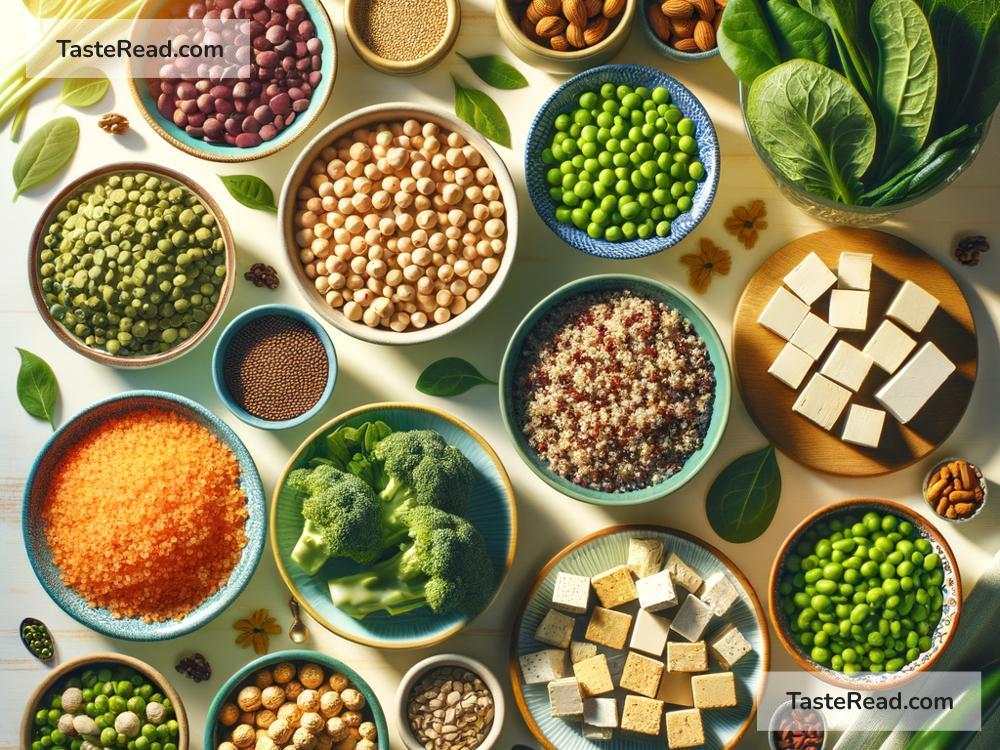The Science Behind Plant-Based Protein Sources
Proteins are an essential part of our diet. They are the building blocks of our bodies, helping us grow, repair tissues, and keep our immune system strong. Traditionally, many people get protein from animal-based foods like meat, eggs, and dairy. However, plant-based protein sources are growing in popularity for health, environmental, and ethical reasons. But how do these plant proteins measure up to animal proteins, and what is the science behind them? Let’s explore!
What Are Proteins Made Of?
First, let’s understand what proteins are. Proteins are large molecules made of smaller parts called amino acids. These amino acids fit together like pieces of a puzzle to perform different functions in the body. There are 20 amino acids, and nine of them are called “essential amino acids.” These are special because our body cannot produce them on its own; we have to get them from food.
Animal proteins are considered “complete proteins,” meaning they contain all nine essential amino acids. While not all plant proteins are complete, many are excellent sources of amino acids, either on their own or when combined with other foods.
Complete vs. Incomplete Proteins
Some plant-based foods, like quinoa, soy, and hemp seeds, are complete proteins, just like meat or eggs. They give you all nine essential amino acids in one package. On the other hand, foods like beans, nuts, and grains are incomplete proteins. This means they lack one or more essential amino acids.
Luckily, incomplete proteins can become “complete” when you pair them with other foods. For example, eating beans and rice together gives you a complete protein because one supplies the amino acids the other lacks. Nutritionists call this “protein combining” or “complementary proteins.” While you don’t have to eat these foods at the same meal, getting a variety of protein-rich plants throughout the day is key to a balanced diet.
Where Do Plants Get Their Protein?
You might wonder how plants even make protein. It all starts with photosynthesis—a process where plants use sunlight to create energy. This energy helps plants grow and produce amino acids, which combine to make protein. By eating plants (or animals that eat plants), we absorb this protein for ourselves.
Some of the most common plant-based protein sources include:
- Legumes (like lentils, chickpeas, and black beans)
- Nuts and seeds (like almonds, peanuts, sunflower seeds, and chia seeds)
- Whole grains (like quinoa, oats, and brown rice)
- Soy products (like tofu, tempeh, and edamame)
- Vegetables (like broccoli, spinach, and potatoes—though they contain smaller amounts of protein compared to nuts or legumes)
How Do Plant Proteins Compare to Animal Proteins?
The quality of protein often comes down to two factors: amino acid content and digestibility.
-
Amino Acid Content: Animal proteins are naturally high in all essential amino acids, making them complete. With plant proteins, you may need to mix and match foods to get the full range of amino acids.
-
Digestibility: Animal proteins are usually easier for our bodies to break down and use compared to plant proteins. However, cooking and processing plant foods can improve their digestibility. For instance, soaking beans before cooking or fermenting soy (like in tempeh) makes the protein more accessible to your body.
Despite these differences, plant-based proteins can provide all the amino acids your body needs if you eat a wide variety of plant foods.
Health Benefits of Plant-Based Proteins
Scientists and nutritionists have found that eating more plant-based proteins offers several health benefits.
-
Heart Health: Plant proteins are naturally low in cholesterol and saturated fat, which are often found in animal-based foods. Eating plants like beans and nuts may help lower your risk of heart disease.
-
Gut Health: Many plant-based protein sources, like lentils and whole grains, are rich in fiber. Fiber is essential for digestion and supports a healthy gut microbiome. Animal proteins, on the other hand, do not contain fiber.
-
Weight Management: Plant-based foods tend to be lower in calories than many animal-based foods. Plus, the fiber in plant proteins helps you feel full for longer, which can be beneficial if you’re trying to maintain a healthy weight.
-
Lower Risk of Chronic Diseases: Studies have shown that eating more plant-based foods can lower the risk of diseases like type 2 diabetes, certain cancers, and osteoporosis.
Environmental and Ethical Considerations
Beyond health, many people choose plant-based proteins for environmental reasons. Farming plants requires less water, land, and energy than raising livestock. Plus, plants produce fewer greenhouse gases, which significantly helps in slowing down climate change.
Ethical considerations also play a role for some individuals. Eating plants reduces harm to animals, which aligns with vegetarian or vegan lifestyles.
How to Incorporate Plant-Based Proteins Into Your Diet
Adding plant proteins to your meals is easy! Start by swapping one animal-based food for a plant-based version. For example:
- Replace chicken with lentils in soups or curries.
- Use almond butter instead of regular butter on toast.
- Snack on roasted chickpeas or mixed nuts instead of cheese or processed chips.
- Try a breakfast of oats topped with chia seeds and almond milk instead of scrambled eggs.
You don’t have to go fully plant-based to enjoy the benefits. Even small changes, like eating one plant-based meal a day, can make a difference for your health and the environment.
Final Thoughts
Plant-based proteins are a powerful and nutritious alternative to animal-based proteins. While they may work differently in the body, they can still provide all the amino acids we need for a healthy lifestyle. Whether you’re looking to improve your diet, reduce your environmental impact, or simply try new foods, plant proteins offer plenty of variety and benefits.
So, grab a handful of nuts, whip up some hummus, or enjoy a bowl of quinoa—and let the science of plants fuel your body!


